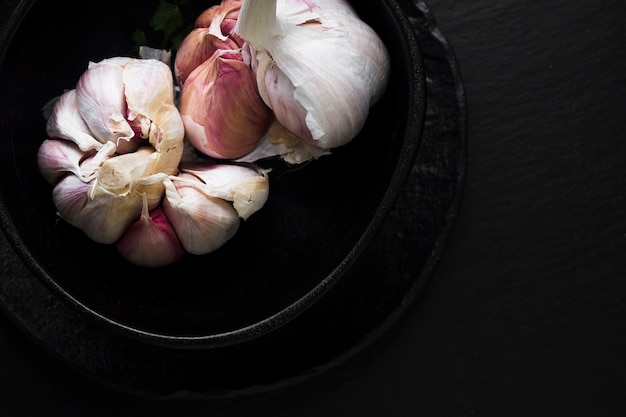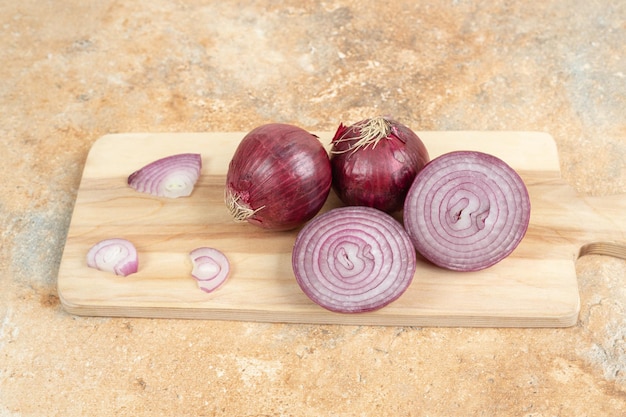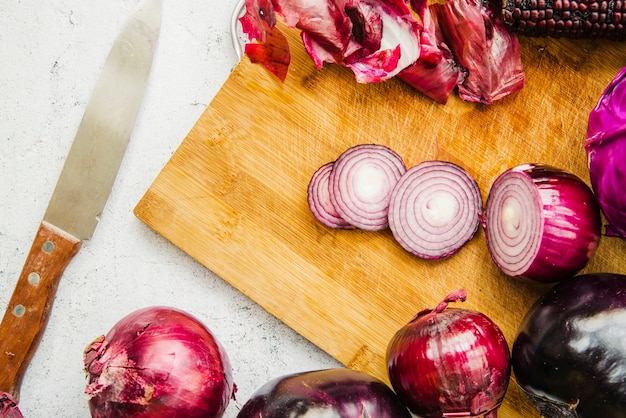(Part 1) Choosing the Right Shallots

Picking Perfect Shallots: A Guide to Buying
Before we get to the cooking, we need to find the best shallots. Think of it like choosing the perfect ingredients for your favourite recipe! Here's what to look for: You want shallots that are firm, plump, and have dry, papery skins. Avoid any that are soft, mushy, or have green shoots sprouting from the top. A good tip: give them a gentle squeeze. If they feel a bit spongy, move on to another bunch. They should feel solid and sturdy, just like a good friend you can rely on!
Storing Your Shallots: A Quick Guide
Now, you've got your perfect shallots, but how do you keep them fresh and flavorful? The best way is to store them in a cool, dry place, like a pantry or a cool cupboard. You can also store them in the fridge, but make sure they're well-ventilated. Avoid storing them near other produce that gives off moisture, like apples or bananas, as this can cause them to spoil faster.
(Part 2) Preparing Shallots: A Step-by-Step Guide

How to Peel Shallots: The Easy Way
Now that you've got your shallots ready, it's time to get them prepped for cooking. Peeling shallots can seem a bit tricky, but don't worry, it's really quite simple. Trim the root end and the leafy top. Then, simply use your fingers to gently peel off the outer skins. You'll find they come off in layers, just like an onion. You can also use a paring knife if you prefer, but be careful not to cut into the shallot itself.
Chopping Shallots: A Beginner's Guide
Once peeled, it's time to chop! I like to dice shallots into small, even pieces, but feel free to chop them into larger chunks if you prefer. Just make sure to remove any green shoots - they can be quite bitter and will affect the flavour of your dish.
Slicing Shallots: A Masterclass
For some dishes, especially those where you want a delicate flavour and a visually appealing presentation, thin slicing is the way to go. This is especially great for sauteing or using in salads. Use a sharp knife and slice the shallots thinly across the grain. It takes a bit more time and effort, but it's worth it!
(Part 3) Cooking Shallots: Techniques and Tips

Sauteing Shallots: The Classic Method
Sauteing is the most common way to cook shallots, and for good reason! It's a simple technique that brings out their natural sweetness and flavour beautifully. Here's how I do it: Heat a little oil in a pan over medium heat, then add the chopped shallots. Cook them for about 5-7 minutes, stirring occasionally, until they’re soft and translucent. You'll know they're ready when they start to turn a lovely golden colour.
Caramelizing Shallots: A Delicious Transformation
Caramelizing shallots takes a little more time and effort, but the results are truly transformative. When you caramelize shallots, they become incredibly sweet and sticky, with a rich, nutty flavour that's just heavenly. Here's my go-to method: Heat some butter or oil in a pan over medium heat, add the shallots, and cook them for about 15-20 minutes, stirring occasionally, until they are deeply caramelized. Be patient and keep an eye on them, as they can burn easily.
Roasting Shallots: A Simple and Aromatic Option
Roasting shallots is a fantastic way to bring out their natural sweetness and create a dish that's both flavourful and easy. I like to toss them in a little olive oil, salt, and pepper, then spread them out on a baking sheet and roast them in a preheated oven at 400°F (200°C) for about 20-25 minutes, until they are tender and slightly caramelized.
(Part 4) Shallot Recipes: From Simple to Spectacular
Simple Shallot Saute: A Versatile side dish
This is a quick and easy side dish that’s perfect for adding a touch of sweetness and flavour to any meal. You’ll need:
- 1 tablespoon olive oil
- 1 cup chopped shallots
- Salt and pepper to taste
Instructions: Heat the olive oil in a pan over medium heat. Add the shallots and cook for about 5-7 minutes, stirring occasionally, until they are soft and translucent. Season with salt and pepper to taste. Serve immediately alongside grilled chicken, fish, or even a simple steak.
Caramelized Shallot and Mushroom Risotto: A Comforting Classic
This creamy risotto recipe is perfect for a cosy night in. It's a little more involved, but the result is a dish that's packed with flavour:
- 1 tablespoon olive oil
- 1 cup chopped shallots
- 1 cup sliced mushrooms
- 1 cup arborio rice
- 1/2 cup dry white wine
- 4 cups hot chicken broth
- 1/2 cup grated Parmesan cheese
- Salt and pepper to taste
Instructions: Heat the olive oil in a large saucepan over medium heat. Add the shallots and cook for about 5 minutes, stirring occasionally, until they are soft and translucent. Add the mushrooms and cook for another 5 minutes, until they are tender. Add the rice and cook for 1 minute, stirring constantly. Add the wine and cook until it is absorbed. Gradually add the hot chicken broth, 1 cup at a time, stirring constantly, until the rice is cooked through and creamy. Stir in the Parmesan cheese, salt, and pepper to taste. Serve immediately, garnished with a sprig of fresh parsley for a beautiful touch.
roast chicken with Shallot and Thyme Gravy: A Festive Favourite
For a special occasion, this roast chicken with a delicious shallot and thyme gravy is sure to impress:
- 1 whole chicken, about 3-4 pounds
- 1 tablespoon olive oil
- 1 cup chopped shallots
- 1 tablespoon fresh thyme leaves
- Salt and pepper to taste
- 1/2 cup chicken broth
- 1 tablespoon flour
Instructions: Preheat oven to 400°F (200°C). Pat the chicken dry with paper towels. Rub the chicken with olive oil, salt, and pepper. Place the chicken in a roasting pan. In a small bowl, combine the chopped shallots, thyme leaves, and a pinch of salt and pepper. Stuff the chicken cavity with the shallot mixture. Roast the chicken for 1 hour and 15 minutes, or until the internal temperature reaches 165°F (74°C). Let the chicken rest for 10 minutes before carving. Meanwhile, make the gravy: In a saucepan, melt the butter over medium heat. Add the shallots and cook for 5 minutes, until soft. Stir in the flour and cook for 1 minute, until the mixture is golden brown. Gradually whisk in the chicken broth, until the gravy is smooth and thickened. Season with salt and pepper to taste. Serve the roast chicken with the shallot and thyme gravy.
(Part 5) Shallot Substitutions: When You're in a Pinch
There are times when you might not have shallots on hand. Don't worry, there are a few good substitutes you can use. Here are my top picks:
- Onions: Onions are the most common substitute for shallots. They have a stronger flavour, so use about half the amount of onion as you would shallots. For example, if a recipe calls for 1 cup of shallots, use 1/2 cup of onions.
- Garlic: Garlic is another good substitute, especially if you're looking for a more pungent flavour. Again, use about half the amount of garlic as you would shallots. For example, if a recipe calls for 1 cup of shallots, use 1/2 cup of garlic.
- Scallions: Scallions are milder than onions and can be a good substitute if you're looking for a more subtle flavour. Use about the same amount of scallions as you would shallots.
- Spring Onions: These have a similar flavour profile to scallions and are often used in Asian cuisine. Use about the same amount as shallots.
(Part 6) Shallot Health Benefits: The Goodness of Garlic's Cousin
Shallots aren't just delicious; they're actually good for you! They're a good source of vitamins, minerals, and antioxidants. They're also low in calories and fat, making them a healthy choice for any diet. Here's what makes them so beneficial:
- Antioxidant Power: Shallots are packed with antioxidants, which help to protect your cells from damage. These antioxidants can help fight inflammation, reduce the risk of certain cancers, and protect against heart disease.
- Heart Health Support: Shallots are also good for your heart. They contain a compound called quercetin, which can help to lower blood pressure and cholesterol levels. They're also a good source of potassium, which is essential for maintaining a healthy heart rhythm.
- Immune System Booster: Shallots contain a compound called allicin, which has been shown to boost the immune system. Allicin can help to fight off infections and keep you healthy.
- Blood Sugar Control: Shallots may help to control blood sugar levels. They contain a compound called fructans, which can help to regulate the absorption of glucose into the bloodstream.
(Part 7) Shallots and Wine Pairing: The Perfect Match
When it comes to wine pairing, shallots are incredibly versatile. They can work with a variety of wines, depending on how they're cooked and what other ingredients are in the dish.
Pairing Shallots with White Wine
For dishes with sauteed or caramelized shallots, I often opt for a crisp white wine, like Sauvignon Blanc or Pinot Grigio. These wines have a refreshing acidity that cuts through the sweetness of the shallots, creating a lovely balance. Try pairing them with a simple sauteed shallot dish or a creamy mushroom risotto with caramelized shallots.
Pairing Shallots with Red Wine
If you're cooking a dish with shallots and red meat, try a light-bodied red wine like Pinot Noir or Beaujolais. These wines have fruity notes that complement the richness of the dish, without overwhelming the subtle flavour of the shallots. They work beautifully with a roast chicken with shallot and thyme gravy or a hearty beef stew with caramelized shallots.
(Part 8) Shallots in Cuisine: Around the World Flavours
Shallots are a staple ingredient in cuisines around the world, bringing their unique flavour and versatility to dishes from various cultures. Here are a few examples:
french cuisine:
Shallots are a key ingredient in many classic French dishes, such as onion soup, French onion dip, and béarnaise sauce. They add a delicate sweetness and aroma to these dishes, complementing the richness of the French culinary tradition.
Asian Cuisine:
Shallots are used extensively in Asian cuisine, particularly in Vietnamese, Thai, and Chinese cooking. They are often used in stir-fries, curries, and noodle dishes, adding a touch of sweetness and complexity. Try them in a Vietnamese pho or a spicy Thai curry.
Middle Eastern Cuisine:
Shallots are also a popular ingredient in Middle Eastern cuisine. They're often used in dips like hummus, baba ghanoush, and muhammara, adding a subtle sweetness and complexity that complements the other flavours in these dishes.
FAQs: Frequently Asked Questions
1. Can I Substitute Shallots for Onions?
You can substitute shallots for onions, but you will need to use less onion because it has a stronger flavour. For example, if a recipe calls for 1 cup of shallots, use 1/2 cup of onions. Keep in mind that the flavour will be different, as onions are more pungent and less sweet than shallots.
2. How Do I Know If My Shallots Are Bad?
Shallots that are bad will be soft, mushy, or have green shoots. They may also have a strong, unpleasant odour. If your shallots have any of these characteristics, it's best to discard them.
3. Can I Freeze Shallots?
Yes, you can freeze shallots. To freeze shallots, simply peel and chop them, then place them in a freezer-safe bag or container. Frozen shallots can last for up to 6 months. To use frozen shallots, simply add them to your dish without thawing.
4. What are the Best Shallots for Cooking?
There are a few different types of shallots, but the most common and versatile type is the French shallot. It has a mild, sweet flavour and is perfect for cooking. Other varieties include the "Grey Shallot" with a more intense flavour and the "Golden Shallot" with a more delicate flavour.
5. What Are the Best Ways to Cook Shallots?
There are many ways to cook shallots, but some of the most common and delicious methods include sauteing, caramelizing, and roasting. Each method brings out different aspects of their flavour profile. Sauteing is quick and simple, caramelizing adds a rich sweetness, and roasting adds a depth of flavour and aroma.
There you have it, folks! Your comprehensive guide to cooking shallots. Whether you're a seasoned chef or a kitchen newbie, I hope this has inspired you to experiment with this versatile and flavourful ingredient. So go on, grab a bunch of shallots and get cooking. Happy cooking!
Everyone is watching

Corn on the Cob: The Ultimate Guide to Perfectly Cooked Ears
Healthy MealsAh, corn on the cob. Just the name evokes images of sunny days, barbecues, and that sweet, juicy flavour that ...

Scallops: The Ultimate Guide to Perfect Cooking
Healthy MealsAh, scallops. Those delicate, sweet, and utterly delicious morsels of the sea. They hold a special place in my...

Spaghetti Squash: The Ultimate Guide to Cooking and Serving
Healthy MealsRemember that time you saw spaghetti squash at the supermarket, looking all bumpy and strange, and thought, "W...

Salmon Cooking Times: Perfect Guide for Every Recipe
Healthy MealsLet me tell you, cooking salmon is an art form. It's all about getting that perfect balance: juicy and tender,...

Ham Cooking Time: How Long to Bake, Smoke, or Boil a Delicious Ham
Healthy MealsAh, ham. It's a classic, isn't it? A real crowd-pleaser, especially around holidays. And when done right, it'...
